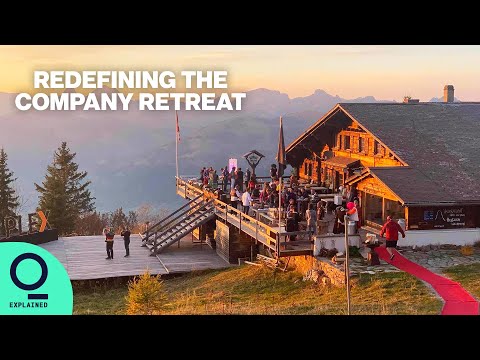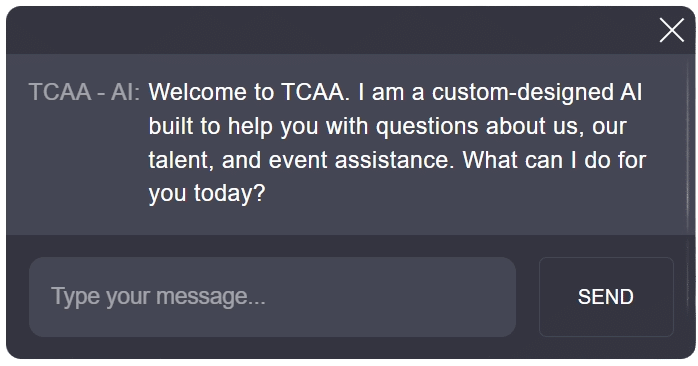In today’s fast-paced corporate environment, corporate retreats have emerged as a vital tool for fostering team connection and uplifting morale. Businesses increasingly recognize that these getaways aren’t just a break from the everyday grind; they’re an investment in employee relationships and overall productivity. Corporate retreats allow staff to understand one another better, breaking down barriers and encouraging a more cohesive work atmosphere. By incorporating bonding activities and wellness practices, organizations can boost team spirit and create an environment where employees thrive.

1. Top 5 Ways Corporate Retreats Enhance Team Connection
Corporate retreats offer unique avenues for team members to cultivate stronger connections. Here are five impactful strategies that organizations can adopt through these retreats:
1.1 Building Trust Through Team-Building Activities
Nothing builds trust quite like engaging in fun, team-oriented challenges. These corporate retreats often incorporate team-building exercises that encourage vulnerability and cooperation. For instance, Google has successfully utilized cooking classes and outdoor adventure courses to foster trust and teamwork among employees. In these informal settings, coworkers drop their professional facades and see each other in a new light.
1.2 Encouraging Open Communication
Retreats serve as perfect platforms for open conversations, enabling employees to share ideas freely away from the pressure of daily operations. Microsoft excels in this area by hosting roundtable discussions during its retreats, allowing individuals from various departments to deliver feedback and brainstorm ideas. This practice fosters an inclusive culture and sparks innovation—there’s something special about sharing insights in a less formal atmosphere.
1.3 Fostering Creative Problem-Solving
Stepping away from the usual office distractions can breathe new life into problem-solving dynamics. IBM has brilliantly harnessed this in their corporate retreats by introducing hackathon-style brainstorming sessions. These innovative activities inspire teams to approach challenges differently, facilitating creativity and fostering a sense of collective ownership over solutions.
1.4 Strengthening Company Culture
Structured retreats can effectively reinforce a company’s core values and mission. For example, Zappos has crafted retreats that include fun cultural elements like ‘Hat Day’, where team members showcase their personalities through quirky hats. This activity not only reflects their unique culture but also promotes engagement and happiness among employees.
1.5 Supporting Work-Life Balance
Many corporate retreats emphasize the significance of work-life balance and employee well-being. Patagonia stands out with retreats organized in proximity to breathtaking nature reserves, where staff can unwind through wellness activities such as yoga and meditation. This holistic view on wellness significantly enhances employee satisfaction and loyalty, making it clear that companies can reap the benefits of supporting their staff’s mental health.

2. Measuring the Impact of Corporate Retreats on Team Spirit
As companies devoutly invest in corporate retreats, it’s essential to gauge their effectiveness and measure the impact on team spirit. Various metrics can assist organizations in understanding the value of these events.
2.1 Employee Engagement Surveys
Pre- and post-retreat surveys offer insights into variations in employee engagement. Companies like Adobe leverage these tools to track metrics associated with team morale and cohesion. This method not only gauges the retreat’s effectiveness but also empowers employees to voice their opinions.
2.2 Performance Metrics
Monitoring improvements in performance—such as increased project completion rates and collaboration frequency—after retreats is crucial for quantifying the return on investment (ROI). Dell discovered that teams participating in offsite retreats experienced a 30% uptick in project efficiency within three months post-event, showcasing the direct benefits of these gatherings.
2.3 Tracking Retention Rates
FCB Health, an advertising agency, also identified a noteworthy decrease in turnover rates after focusing their retreats on team-building and reinforcing company culture. This indicates that corporate retreats can significantly contribute to employee retention, underscoring their impact on long-term organizational success.

3. Designing Effective Corporate Retreats: Best Practices from Industry Leaders
Crafting impactful corporate retreats doesn’t happen by chance; careful planning is a must. Here are some best practices derived from successful organizations.
3.1 Set Clear Objectives
Aligning the purpose of the retreat with specific company goals is vital. For example, HubSpot hosts quarterly retreats focused on strategic planning, ensuring that each activity ties back to their organization’s priorities and mission. This kind of alignment maximizes the value of the retreat.
3.2 Foster Inclusivity
Inclusivity ensures that all voices within the team are acknowledged. Salesforce demonstrates this by including diverse perspectives in activity design, enriching participation and engagement. When everyone feels represented, team spirit flourishes, leading to better brainstorming and decision-making.
3.3 Incorporate Follow-Up Activities
To maximize the benefits derived from retreats, organizations like HubSpot implement follow-up workshops to cultivate ideas generated during the gatherings. This approach helps sustain momentum, ensuring that conversations don’t just linger in the retreat environment but translate into actionable strategies and improvements.

Innovating Team Spirit Through Corporate Retreats
Corporate retreats are more than just a break from the office; they are a thoughtful investment in employee relationships, company culture, and overall morale. As organizations journey through modern business’s intricacies, effective retreats provide essential spaces for connection, creativity, and collaboration. By setting clear objectives, measuring impacts, and tapping into insights from industry champions, businesses can leverage corporate retreats to create profound community bonds among their teams. This sense of connection translates not only into enhanced productivity but also into a culture where individuals feel valued and engaged.
To explore Immersive Vr Engagements, leadership strategies, or insights on AI And public speaking, enhance your next corporate event with Speaker engagement Tools that align with your objectives. The right talent can make all the difference in transforming your retreat into an unforgettable experience.
In conclusion, corporate retreats present a chance for firms to bond with their employees, fostering a collaborative spirit that drives success. Whether for morale boost or creative problem-solving, embracing this trend can yield substantial, long-lasting benefits for any organization.

Corporate Retreats: Fun Trivia and Interesting Facts
The Origins of Corporate Retreats
Did you know corporate retreats have origins that stretch back to the mid-20th century? They first gained popularity in the 1960s when companies recognized the benefits of taking employees out of the office for a little R&R. A change of scenery can work wonders; it gives teams an opportunity to break away from their daily grind and build connections. Interestingly, these retreats can significantly influence everything from morale to employee retention, as highlighted in various Wealth-building Strategies that focus on investing in human capital.
Team-Building Activities and Their Quirky History
When it comes to activities during these retreats, there’s a fascinating mix. Some companies opt for traditional team-building exercises, while others lean into unconventional methods. Ever heard of trust falls? These might seem cliché, but they have a surprising history tied to leadership training. They’re even akin to psychologically intense moments seen in cinema, like the crisis observed in the movie Michael Douglas Falling Down — where the main character’s breakdown illustrates the importance of understanding employees’ mental health. Incorporating fun, unusual activities can also spark creativity and foster camaraderie, making the experience memorable.
Social Connections and Bonding Through Fun Facts
One of the underrated perks of corporate retreats is the chance for employees to bond on a social level. Did you know that studies show shared experiences can increase likability and empathy among team members? Taking a little time to relax creates an atmosphere where workers can see each other as more than just colleagues. This shift in perspective can be transformative. For instance, reflecting on how sports coaches like Sean Miller build teams may surprise you. Their strategies can often mirror those employed in corporate settings, uniting individuals through common goals. Also, fun fact: discussions on whether phones should be allowed in school have generated debates that resonate within corporate settings too, as companies determine how tech can either distract or enhance the experience during retreats.
In the fast-paced environment of business, corporate retreats provide much-needed space to recharge and innovate. The trivia and facts surrounding these events reinforce their value, showing that while work is crucial, the connections built outside the office can contribute to long-term success and team spirit.

What are corporate retreats?
A corporate retreat is a getaway for employees and management that focuses on building connections and enhancing corporate planning in a chill environment. It’s about boosting morale and helping coworkers understand each other better.
Are corporate retreats still a thing?
Yep, company retreats are making a comeback, but with a twist. They’re not just about work anymore; they’re centered around having fun and bonding with teammates.
How much do companies spend on corporate retreats?
Companies typically spend between $2,000 and $3,000 per attendee for a retreat, though this can really vary depending on what the event aims to achieve. It’s all about setting a budget that aligns with your goals.
Are work retreats worth it?
Retreats can absolutely be worth it! They provide a break from the daily grind, letting folks recharge, have some fun, and prioritize wellness, which often pays off down the line in team morale and productivity.
How long should a corporate retreat last?
Most corporate retreats last anywhere from one to three days, giving everyone enough time to connect without dragging on too long. It’s all about finding that sweet spot!
Do companies still do retreats?
Yes, many companies still hold retreats as a way to connect their teams and strengthen relationships. It’s a great way to step out of the office for some quality time together.
Do retreats make money?
Retreats can definitely be profitable if they’re done right. When teams bond and morale boosts, it can lead to better performance and even increased revenue.
What qualifies as a business retreat?
A business retreat usually involves team-building activities, strategic planning, or professional development. It’s all about aligning goals and improving teamwork outside of the usual office setting.
Are company retreats mandatory?
Company retreats are generally not mandatory, but attendance is often encouraged to foster team spirit. It’s a chance for everyone to relax and connect.
What makes a successful company retreat?
Successful retreats typically include clear goals, engaging activities, and a mix of fun and work. It’s all about creating an environment where people can unwind and collaborate effectively.
How does retreat cost work?
Retreat costs generally depend on the location, activities planned, and the number of attendees. It’s best to set a budget that matches the goals you’re trying to achieve.
How profitable is a wellness retreat?
Wellness retreats can be quite profitable by promoting health and relaxation, resulting in improved employee well-being and possibly reduced healthcare costs for companies.
What is the best month for retreats?
The best month for retreats often depends on the weather and business cycles, but many companies favor spring and fall for milder weather and to avoid busy seasons.
How many days should a retreat be?
Most retreats last between 2 to 5 days, giving enough time for team bonding and productive discussions without overstaying the welcome.
What is the objective of a corporate retreat?
The main objective of a corporate retreat is to strengthen teamwork and develop strategies for the future. It’s about getting everyone on the same page.
What is the purpose of a retreat?
A retreat’s purpose is to create a relaxed environment where employees can connect, brainstorm, and rejuvenate, all while stepping away from the regular hustle and bustle of work.
What is the purpose of an organizational retreat?
An organizational retreat serves to align the team on common goals and values, address challenges, and foster collaboration in a more informal setting.
What qualifies as a business retreat?
Similar to business retreats, a company retreat usually involves team-building activities, brainstorming sessions, and strategic discussions in a relaxed atmosphere.
What do you talk about at a company retreat?
At a company retreat, discussions often revolve around team goals, project updates, personal growth, and ways to enhance collaboration, all while enjoying a laid-back vibe.



